Modulation of lipid metabolic defects rescues cleft palate in Tgfbr2 mutant mice
- PMID: 23975680
- PMCID: PMC3857953
- DOI: 10.1093/hmg/ddt410
Modulation of lipid metabolic defects rescues cleft palate in Tgfbr2 mutant mice
Abstract
Mutations in transforming growth factor beta (TGFβ) receptor type II (TGFBR2) cause Loeys-Dietz syndrome, characterized by craniofacial and cardiovascular abnormalities. Mice with a deletion of Tgfbr2 in cranial neural crest cells (Tgfbr2(fl/fl);Wnt1-Cre mice) develop cleft palate as the result of abnormal TGFβ signaling activation. However, little is known about metabolic processes downstream of TGFβ signaling during palatogenesis. Here, we show that Tgfbr2 mutant palatal mesenchymal cells spontaneously accumulate lipid droplets, resulting from reduced lipolysis activity. Tgfbr2 mutant palatal mesenchymal cells failed to respond to the cell proliferation stimulator sonic hedgehog, derived from the palatal epithelium. Treatment with p38 mitogen-activated protein kinase (MAPK) inhibitor or telmisartan, a modulator of p38 MAPK activation and lipid metabolism, blocked abnormal TGFβ-mediated p38 MAPK activation, restoring lipid metabolism and cell proliferation activity both in vitro and in vivo. Our results highlight the influence of alternative TGFβ signaling on lipid metabolic activities, as well as how lipid metabolic defects can affect cell proliferation and adversely impact palatogenesis. This discovery has broader implications for the understanding of metabolic defects and potential prevention of congenital birth defects.
Figures
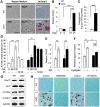
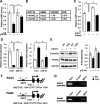
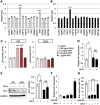
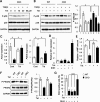

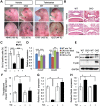
Similar articles
-
Identification of candidate downstream targets of TGFβ signaling during palate development by genome-wide transcript profiling.J Cell Biochem. 2013 Apr;114(4):796-807. doi: 10.1002/jcb.24417. J Cell Biochem. 2013. PMID: 23060211 Free PMC article.
-
Modulation of noncanonical TGF-β signaling prevents cleft palate in Tgfbr2 mutant mice.J Clin Invest. 2012 Mar;122(3):873-85. doi: 10.1172/JCI61498. Epub 2012 Feb 13. J Clin Invest. 2012. PMID: 22326956 Free PMC article.
-
CTGF mediates Smad-dependent transforming growth factor β signaling to regulate mesenchymal cell proliferation during palate development.Mol Cell Biol. 2013 Sep;33(17):3482-93. doi: 10.1128/MCB.00615-13. Epub 2013 Jul 1. Mol Cell Biol. 2013. PMID: 23816882 Free PMC article.
-
A new sporadic case of early-onset Loeys-Dietz syndrome due to the recurrent mutation p.R528C in the TGFBR2 gene substantiates interindividual clinical variability.J Appl Genet. 2009;50(4):405-10. doi: 10.1007/BF03195701. J Appl Genet. 2009. PMID: 19875893 Review.
-
TGFβ signaling and congenital heart disease: Insights from mouse studies.Birth Defects Res A Clin Mol Teratol. 2011 Jun;91(6):423-34. doi: 10.1002/bdra.20794. Epub 2011 Apr 28. Birth Defects Res A Clin Mol Teratol. 2011. PMID: 21538815 Review.
Cited by
-
Current Controversies in Diagnosis and Management of Cleft Palate and Velopharyngeal Insufficiency.Biomed Res Int. 2015;2015:196240. doi: 10.1155/2015/196240. Epub 2015 Jul 26. Biomed Res Int. 2015. PMID: 26273595 Free PMC article. Review.
-
Genetic Analysis and Functional Assessment of a TGFBR2 Variant in Micrognathia and Cleft Palate.bioRxiv [Preprint]. 2024 Apr 11:2024.04.08.588524. doi: 10.1101/2024.04.08.588524. bioRxiv. 2024. Update in: PLoS One. 2025 Jun 9;20(6):e0324803. doi: 10.1371/journal.pone.0324803. PMID: 38645005 Free PMC article. Updated. Preprint.
-
Epigenetic implications in maternal diabetes and metabolic syndrome-associated risk of orofacial clefts.Birth Defects Res. 2023 Nov 15;115(19):1835-1850. doi: 10.1002/bdr2.2226. Epub 2023 Jul 27. Birth Defects Res. 2023. PMID: 37497595 Free PMC article. Review.
-
TGF-β1 and TGFβR2 Gene Polymorphisms in Patients with Unstable Angina.Biomedicines. 2023 Jan 7;11(1):155. doi: 10.3390/biomedicines11010155. Biomedicines. 2023. PMID: 36672663 Free PMC article.
-
MicroRNA-374a, -4680, and -133b suppress cell proliferation through the regulation of genes associated with human cleft palate in cultured human palate cells.BMC Med Genomics. 2019 Jul 1;12(1):93. doi: 10.1186/s12920-019-0546-z. BMC Med Genomics. 2019. PMID: 31262291 Free PMC article.
References
-
- Mossey P.A., Little J., Munger R.G., Dixon M.J., Shaw W.C. Cleft lip and palate. Lancet. 2009;374:1773–1785. doi:10.1016/S0140-6736(09)60695-4. - DOI - PubMed
-
- Hrubec T.C., Prater M.R., Toops K.A., Holladay S.D. Reduction in diabetes-induced craniofacial defects by maternal immune stimulation. Birth Defects Res. B Dev. Reprod. Toxicol. 2006;77:1–9. doi:10.1002/bdrb.20062. - DOI - PMC - PubMed
-
- Al Ghafli M.H., Padmanabhan R., Kataya H.H., Berg B. Effects of alpha-lipoic acid supplementation on maternal diabetes-induced growth retardation and congenital anomalies in rat fetuses. Mol. Cell. Biochem. 2004;261:123–135. doi:10.1023/B:MCBI.0000028747.92084.42. - DOI - PubMed
-
- Moore L.L., Singer M.R., Bradlee M.L., Rothman K.J., Milunsky A. A prospective study of the risk of congenital defects associated with maternal obesity and diabetes mellitus. Epidemiology. 2000;11:689–694. doi:10.1097/00001648-200011000-00013. - DOI - PubMed
-
- Ewart-Toland A., Yankowitz J., Winder A., Imagire R., Cox V.A., Aylsworth A.S., Golabi M. Oculoauriculovertebral abnormalities in children of diabetic mothers. Am. J. Med. Genet. 2000;90:303–309. doi:10.1002/(SICI)1096-8628(20000214)90:4<303::AID-AJMG8>3.0.CO;2-Q. - DOI - PubMed
Publication types
MeSH terms
Substances
Grants and funding
LinkOut - more resources
Full Text Sources
Other Literature Sources
Medical
Molecular Biology Databases

